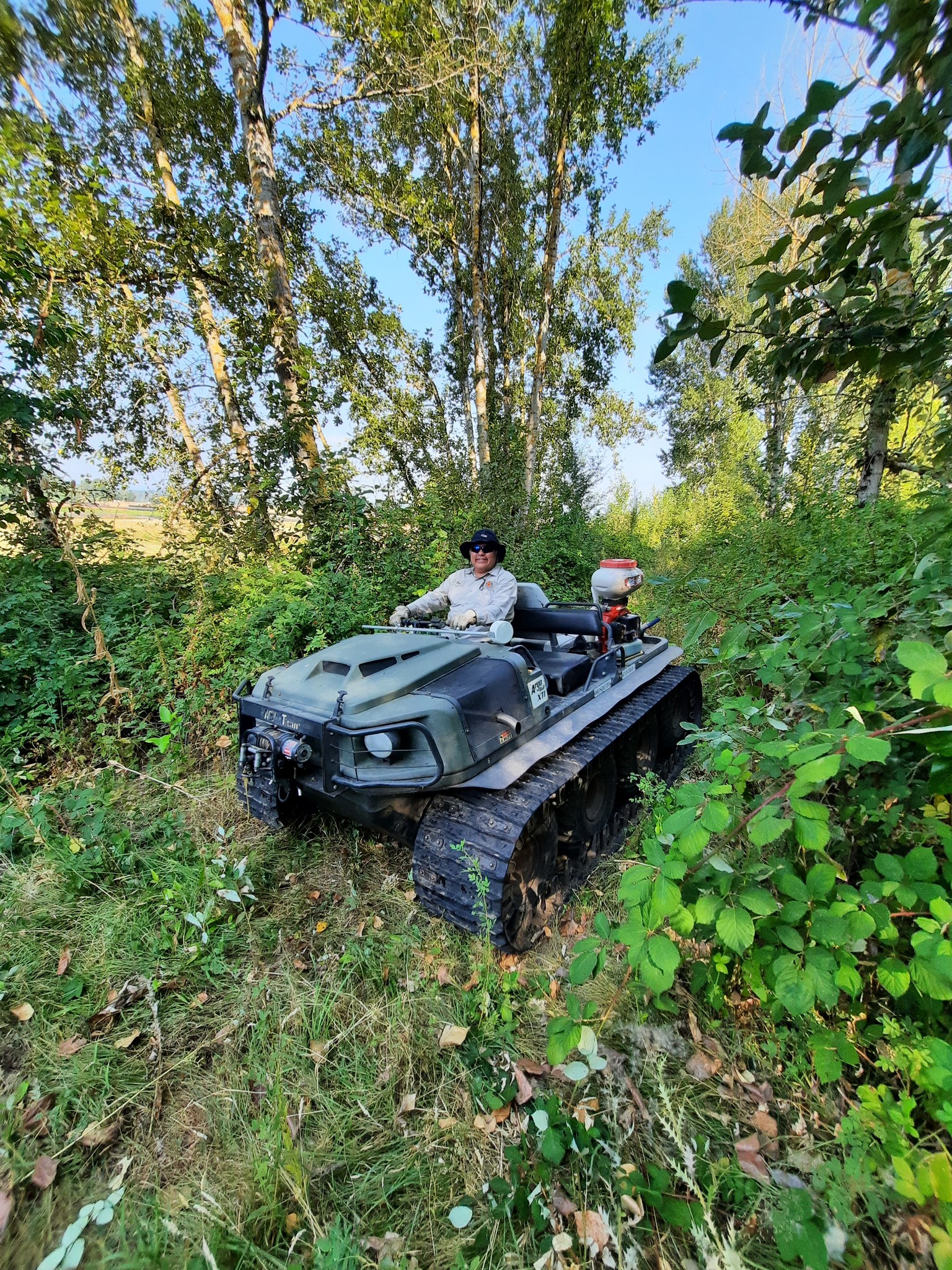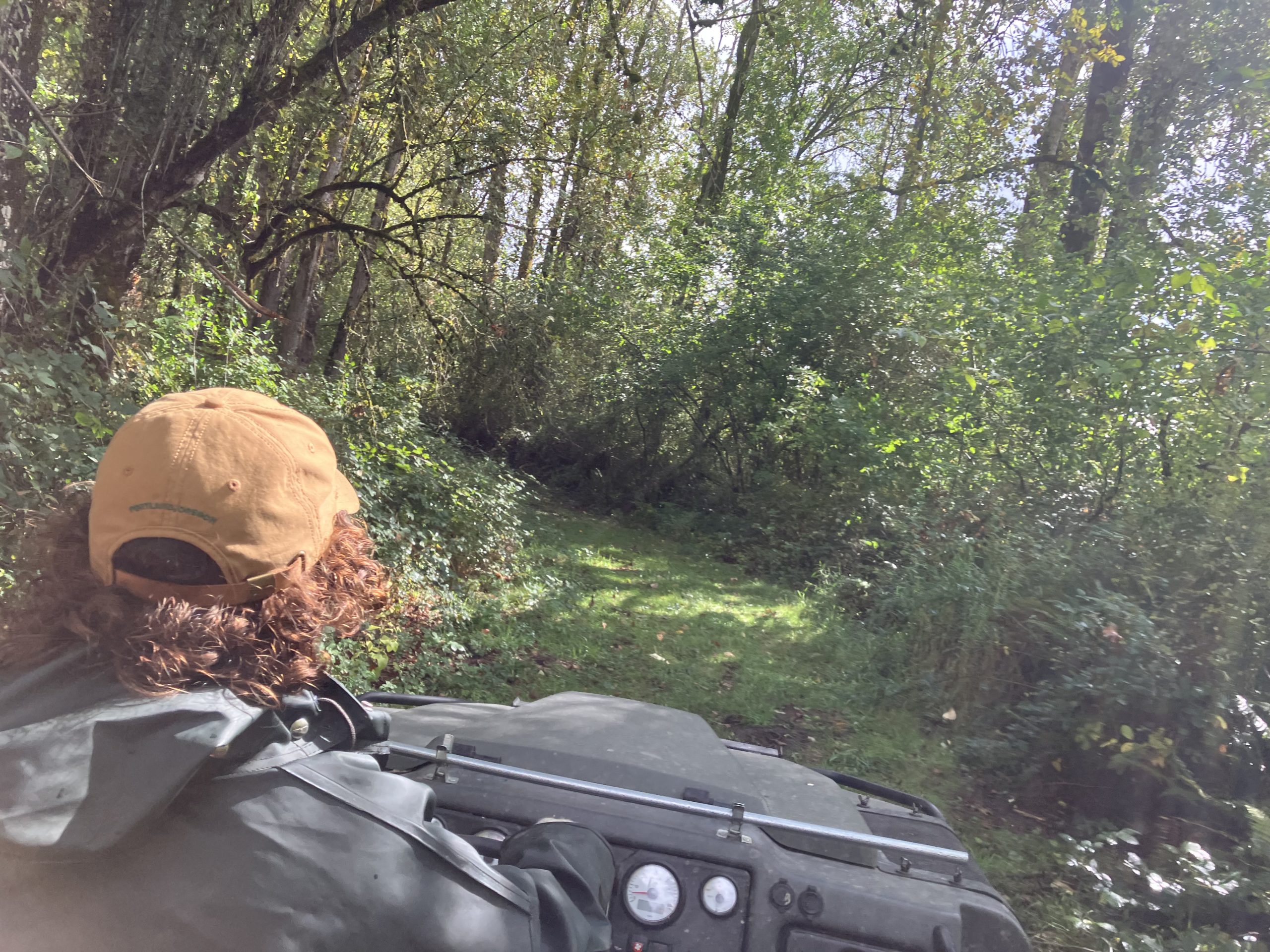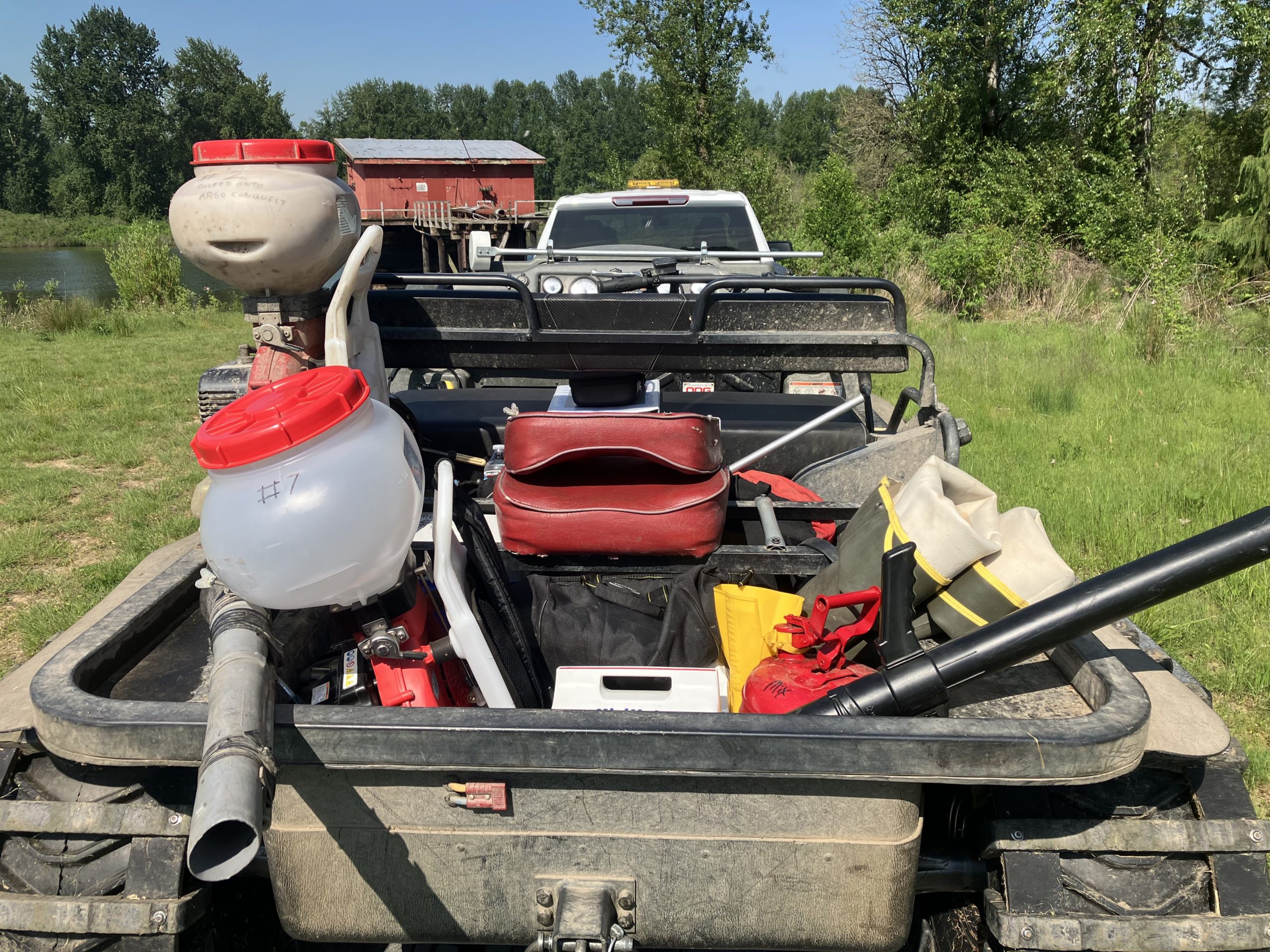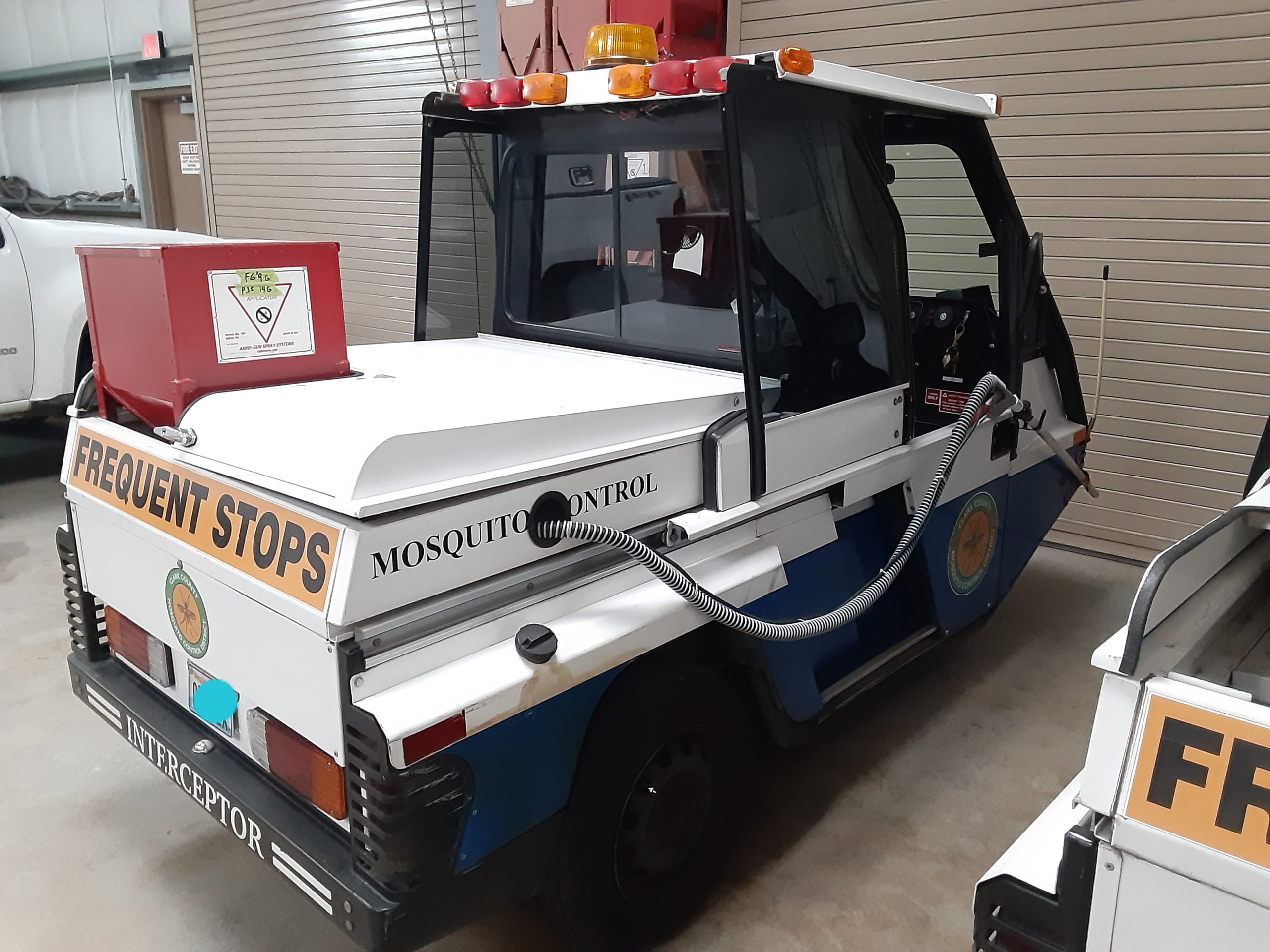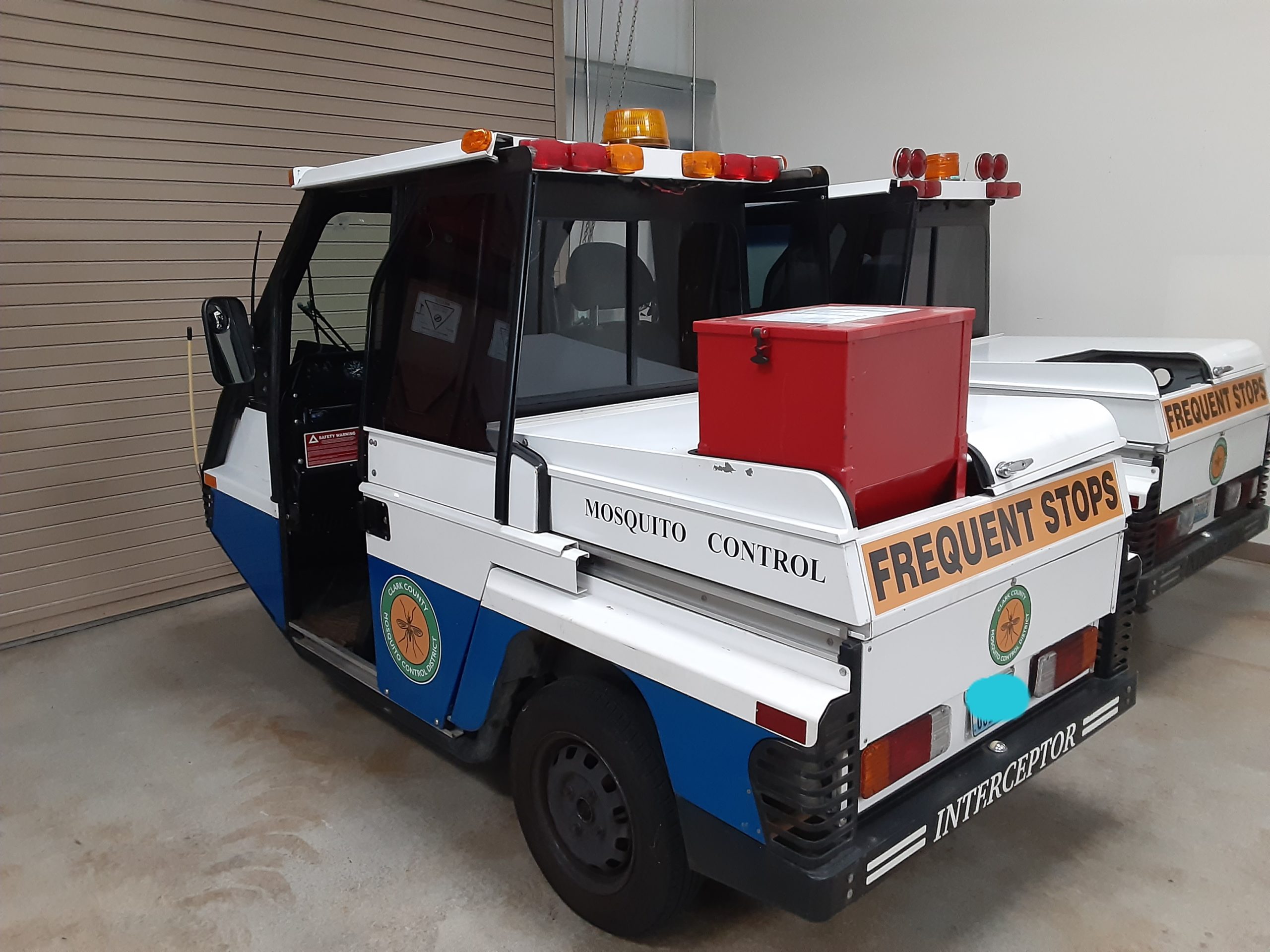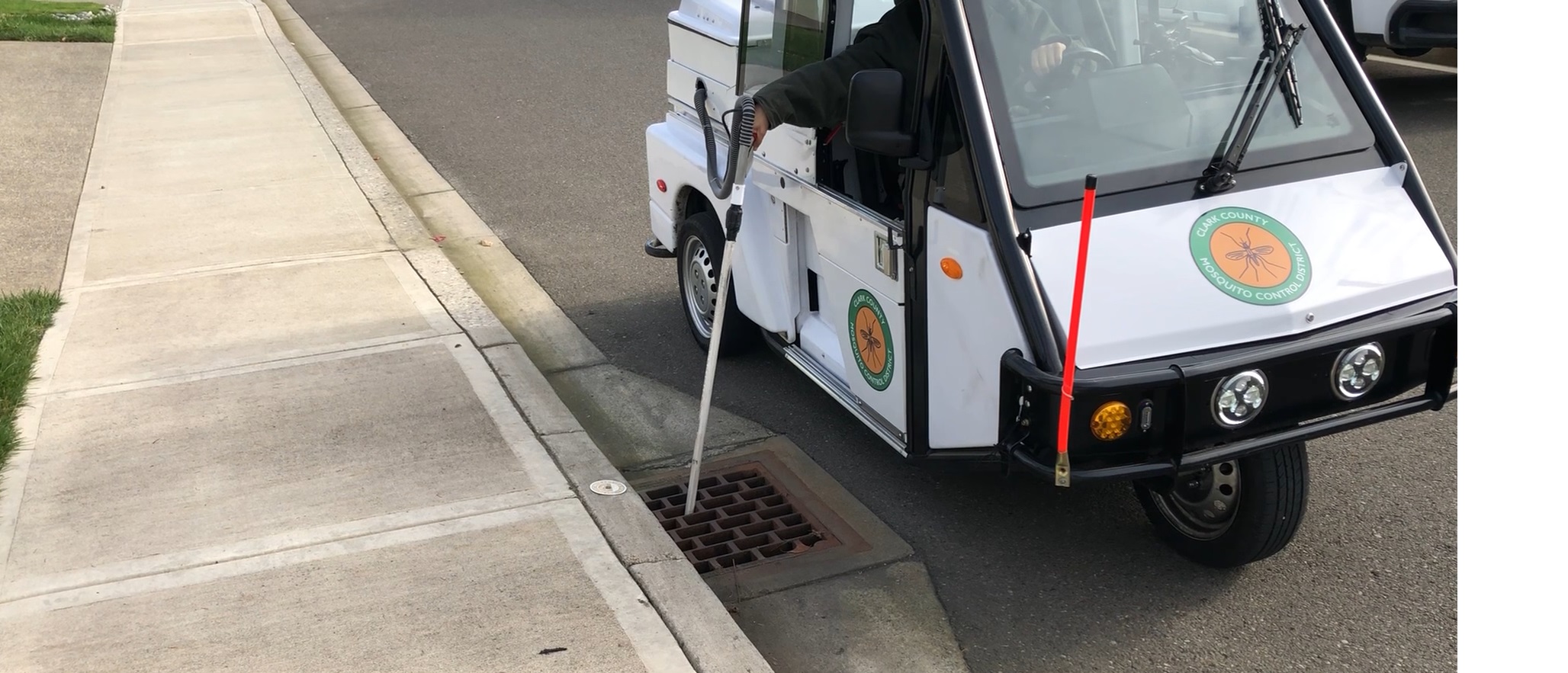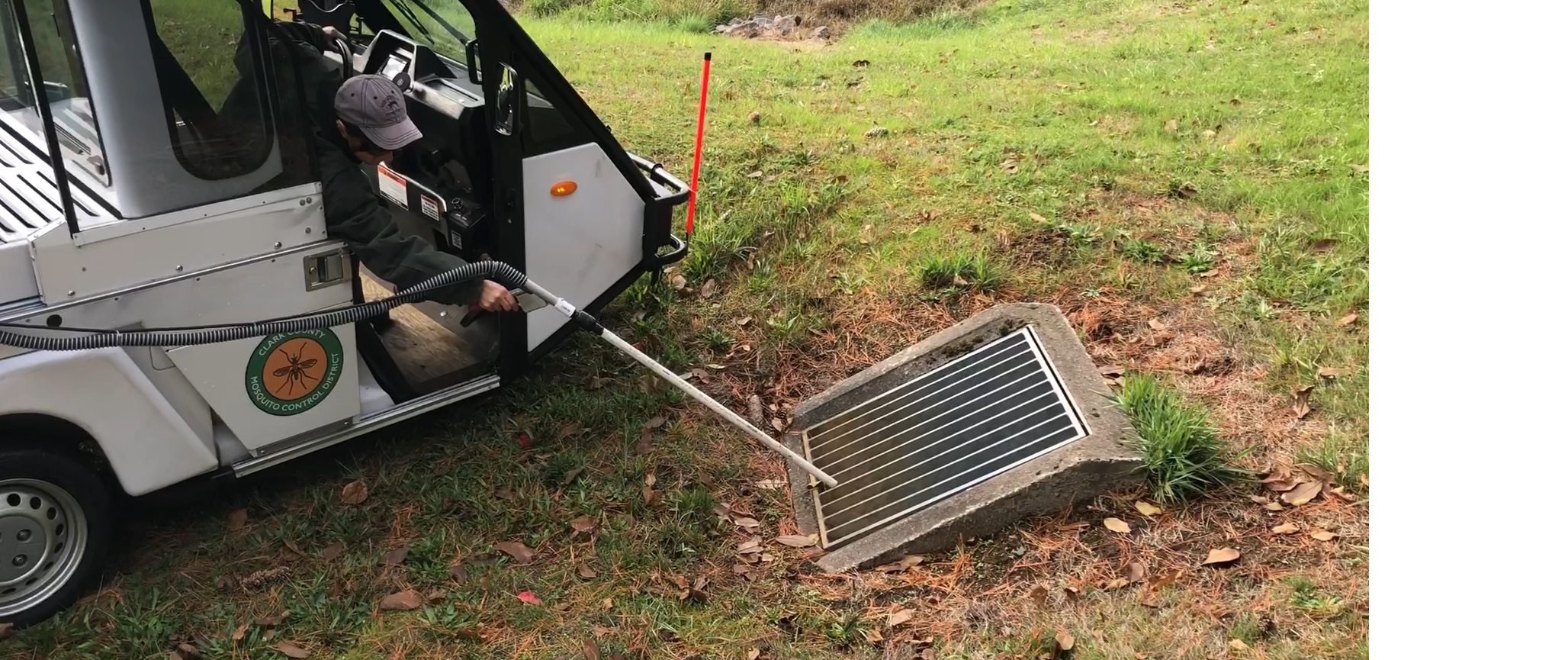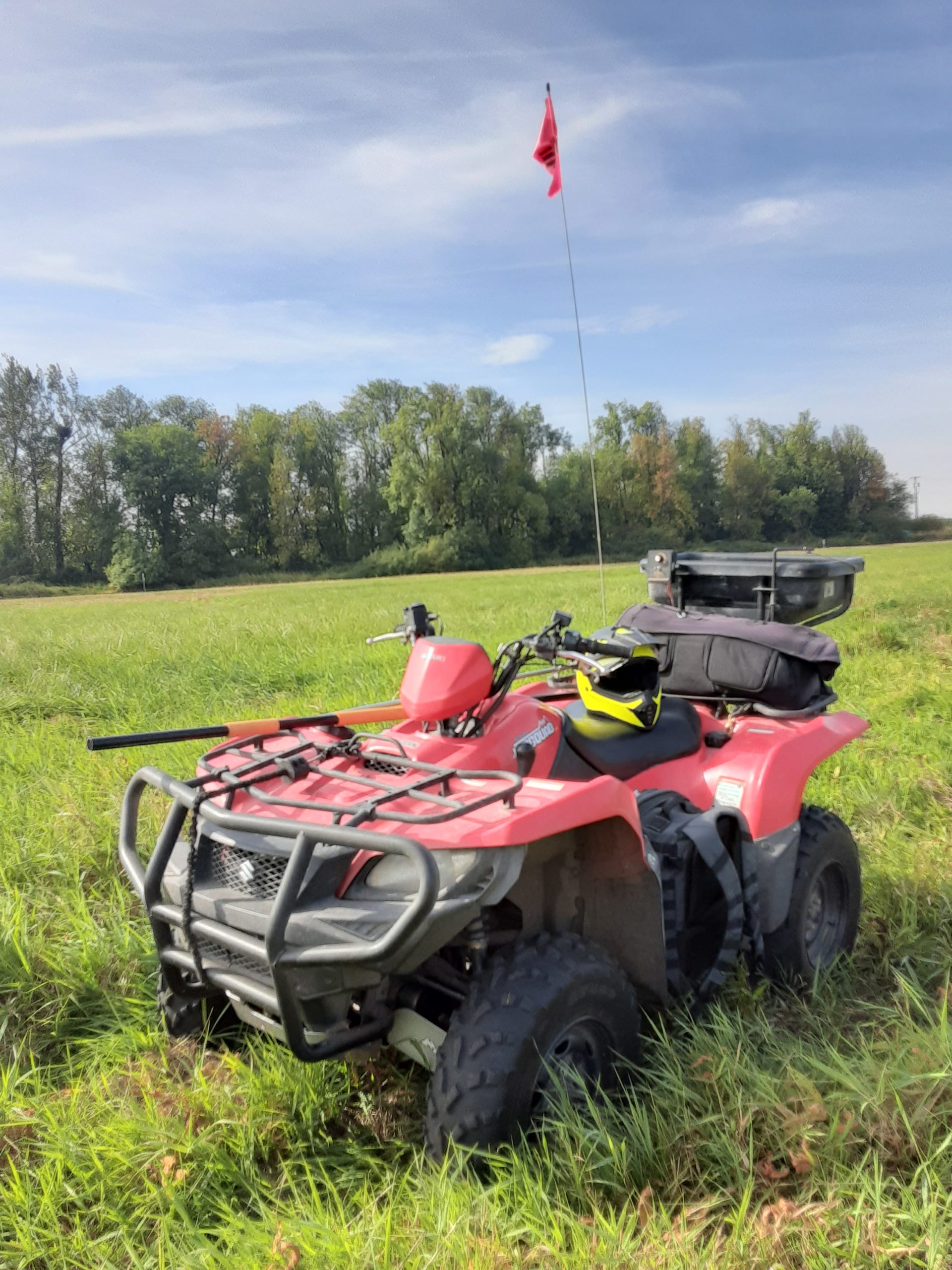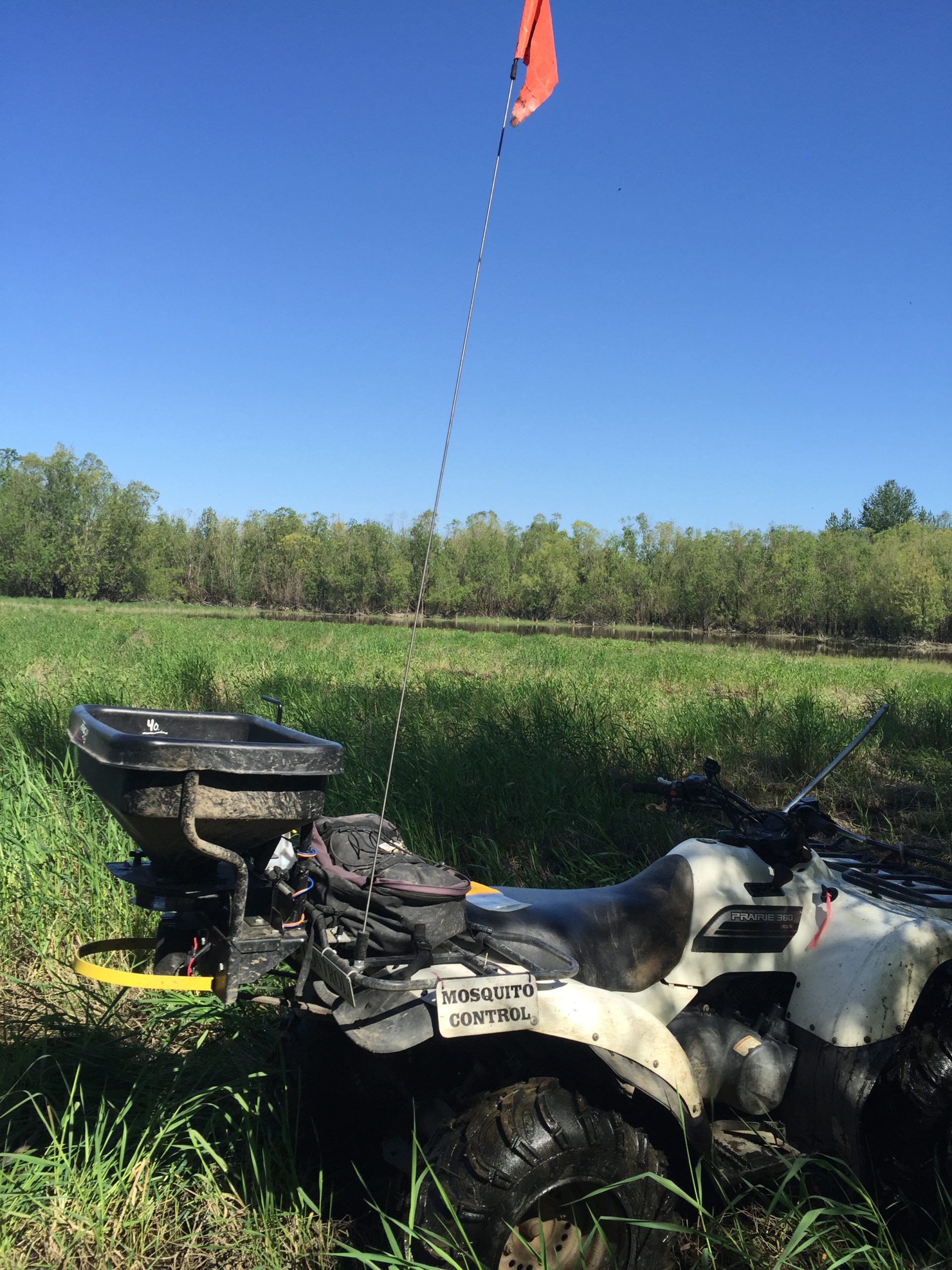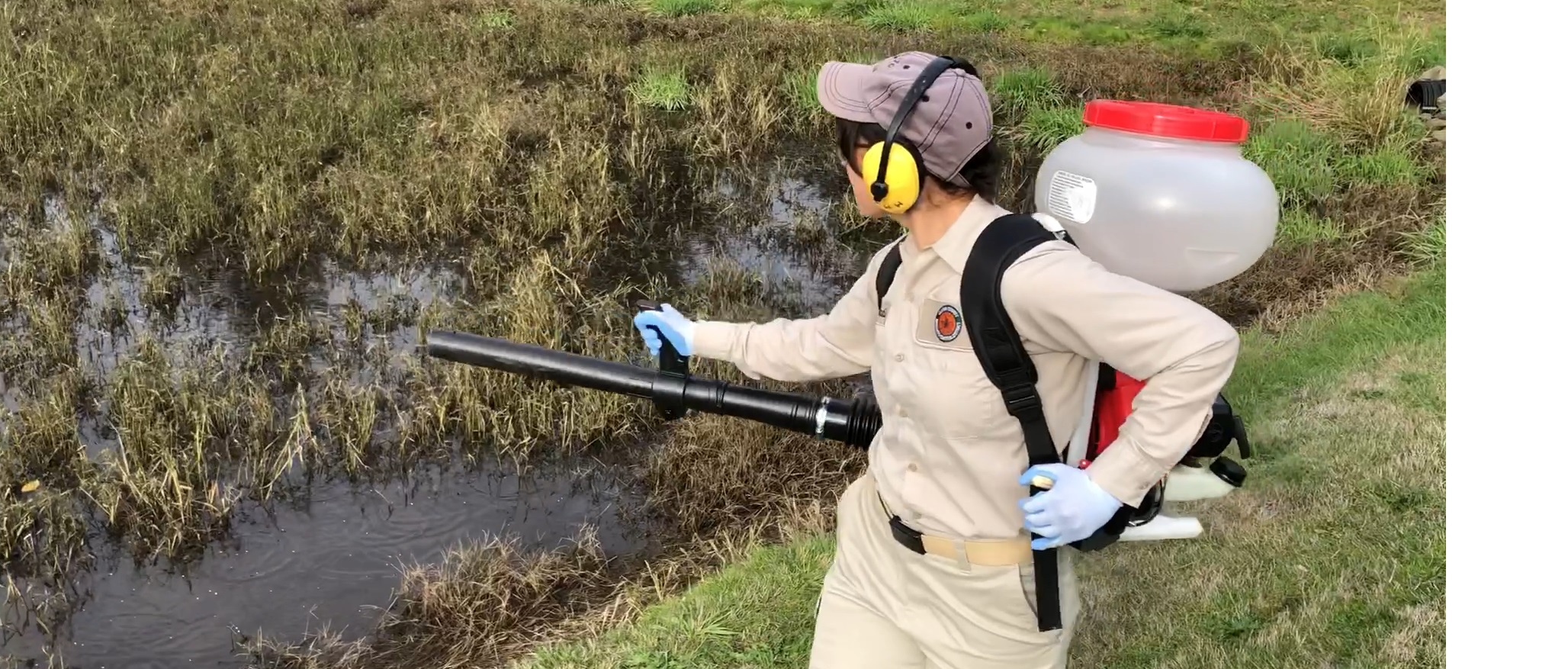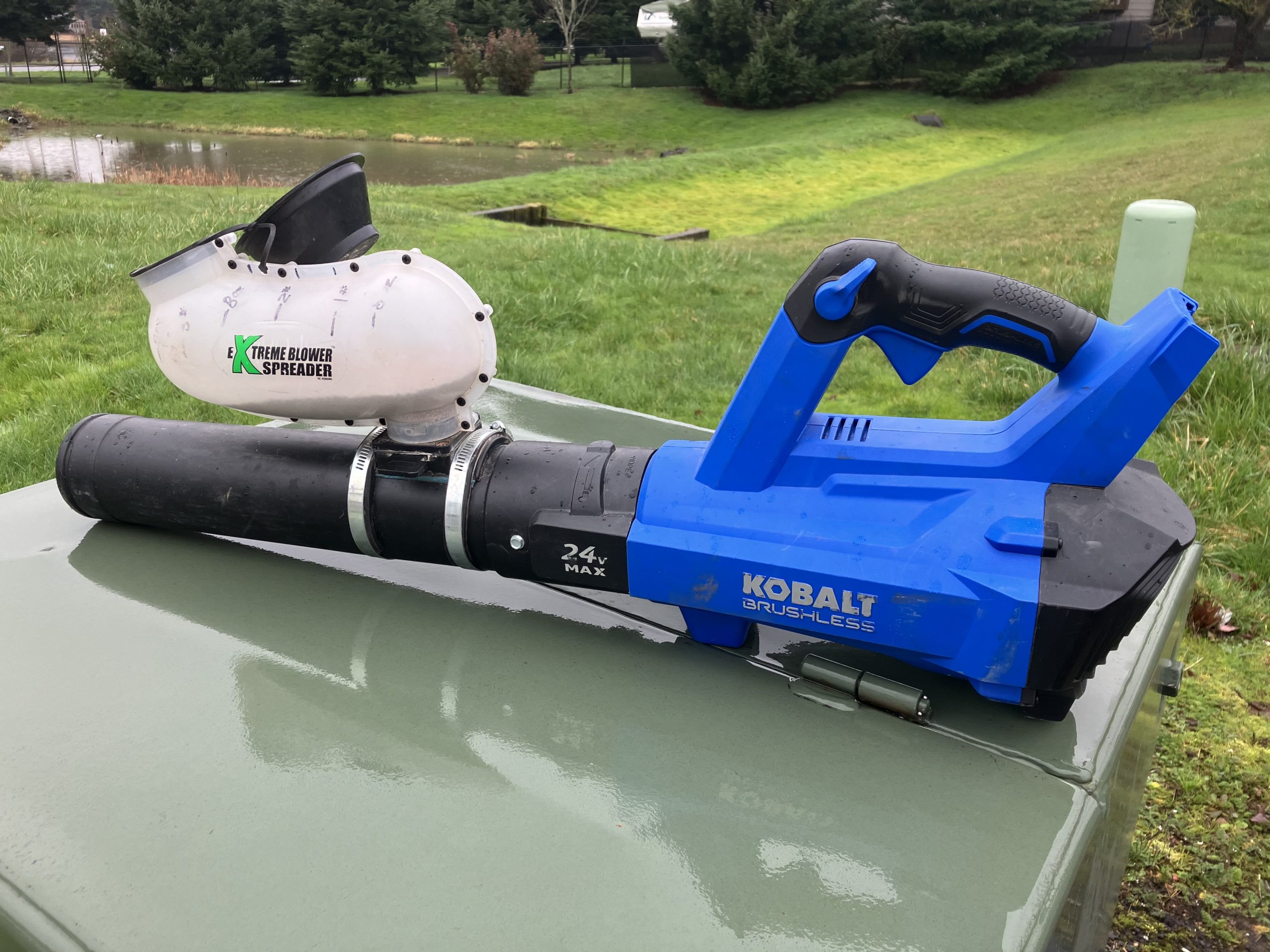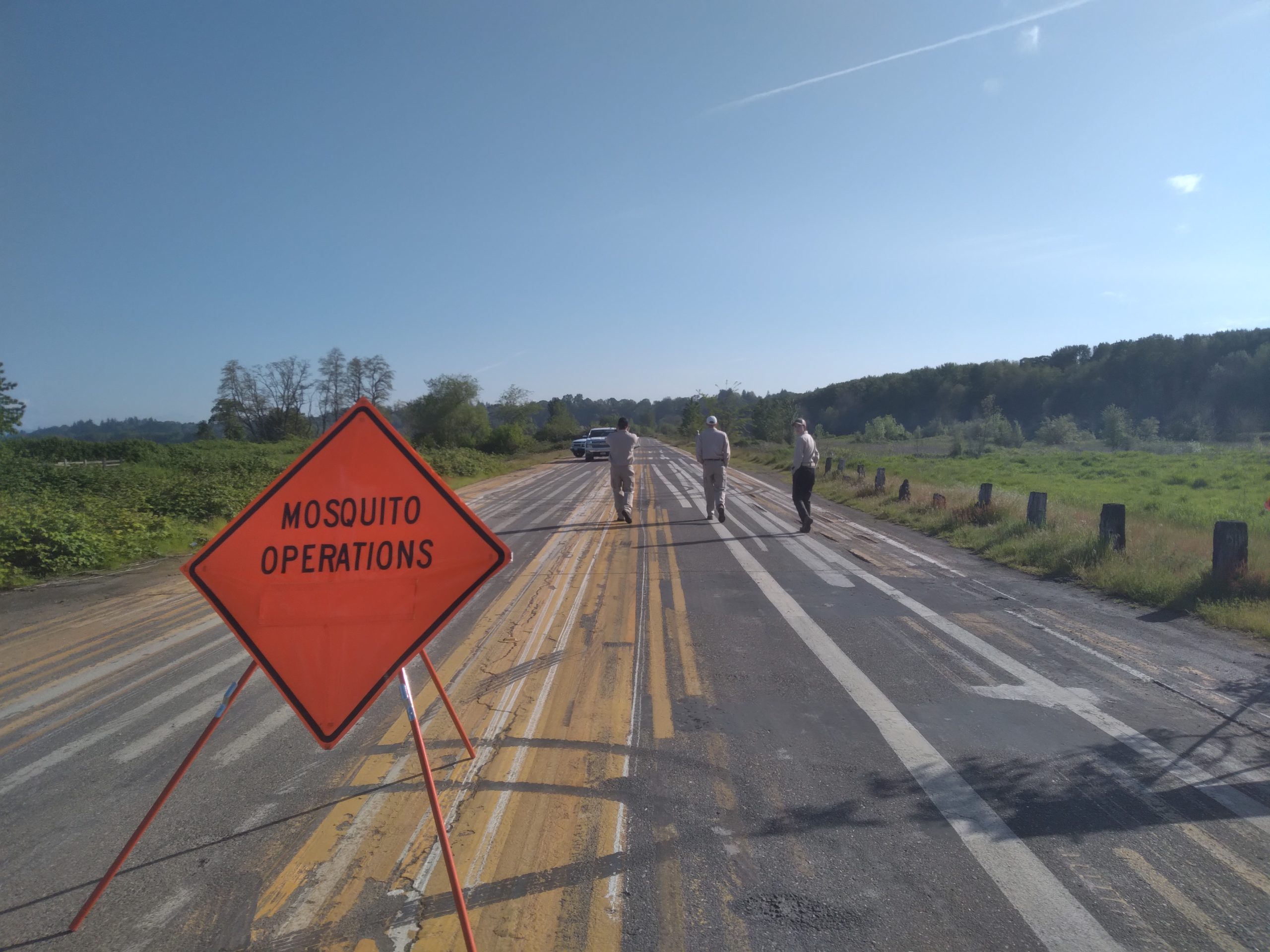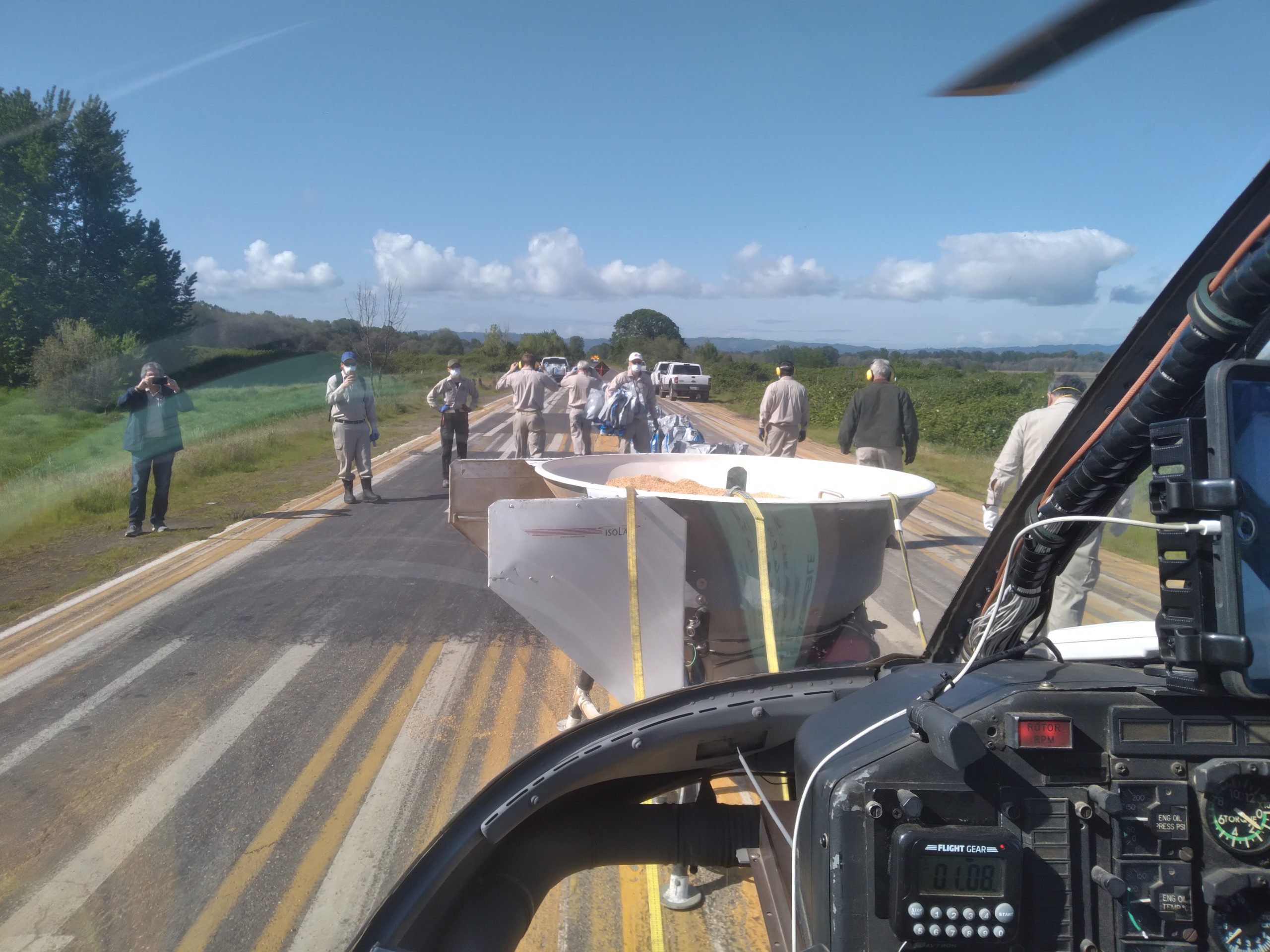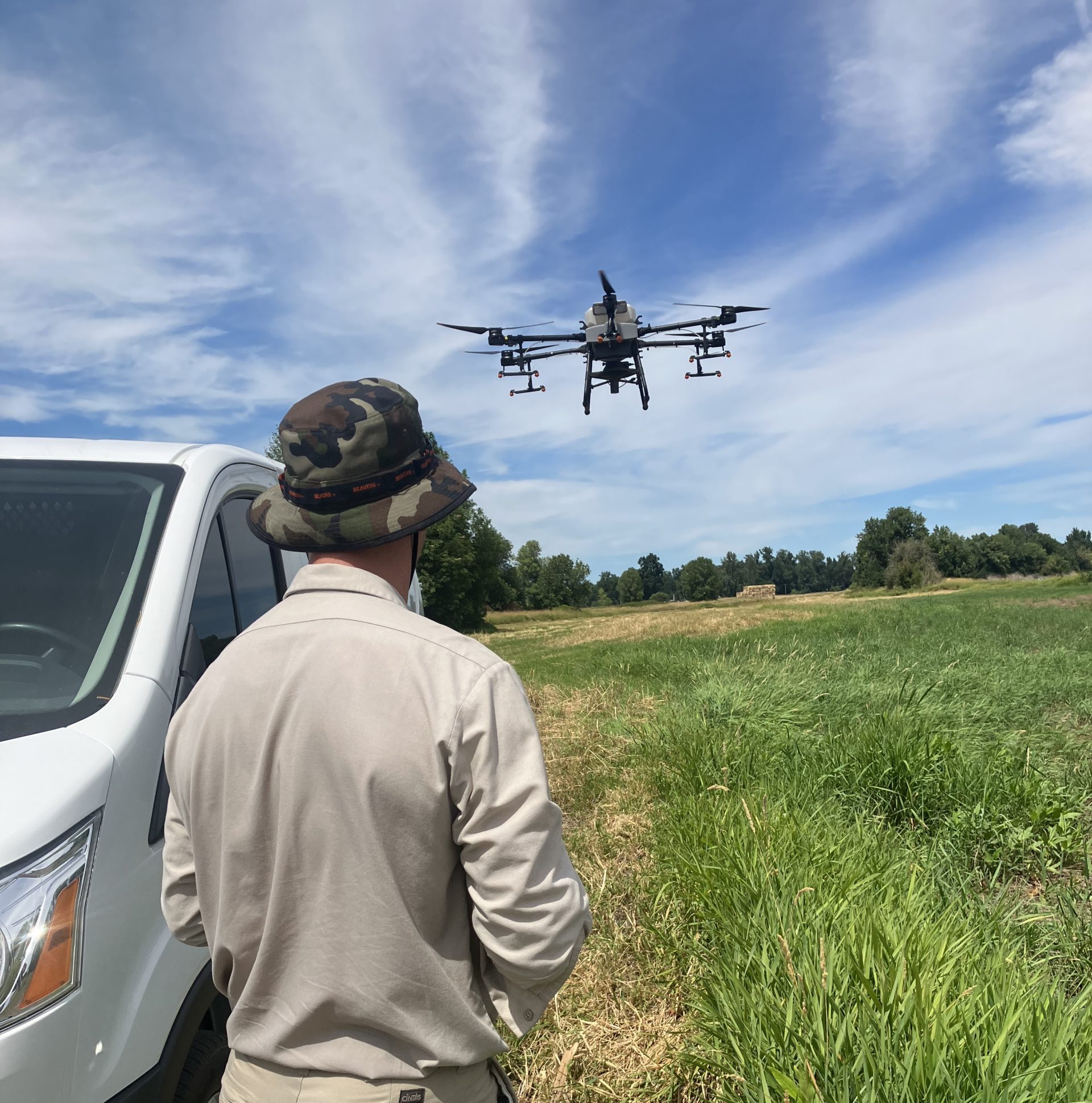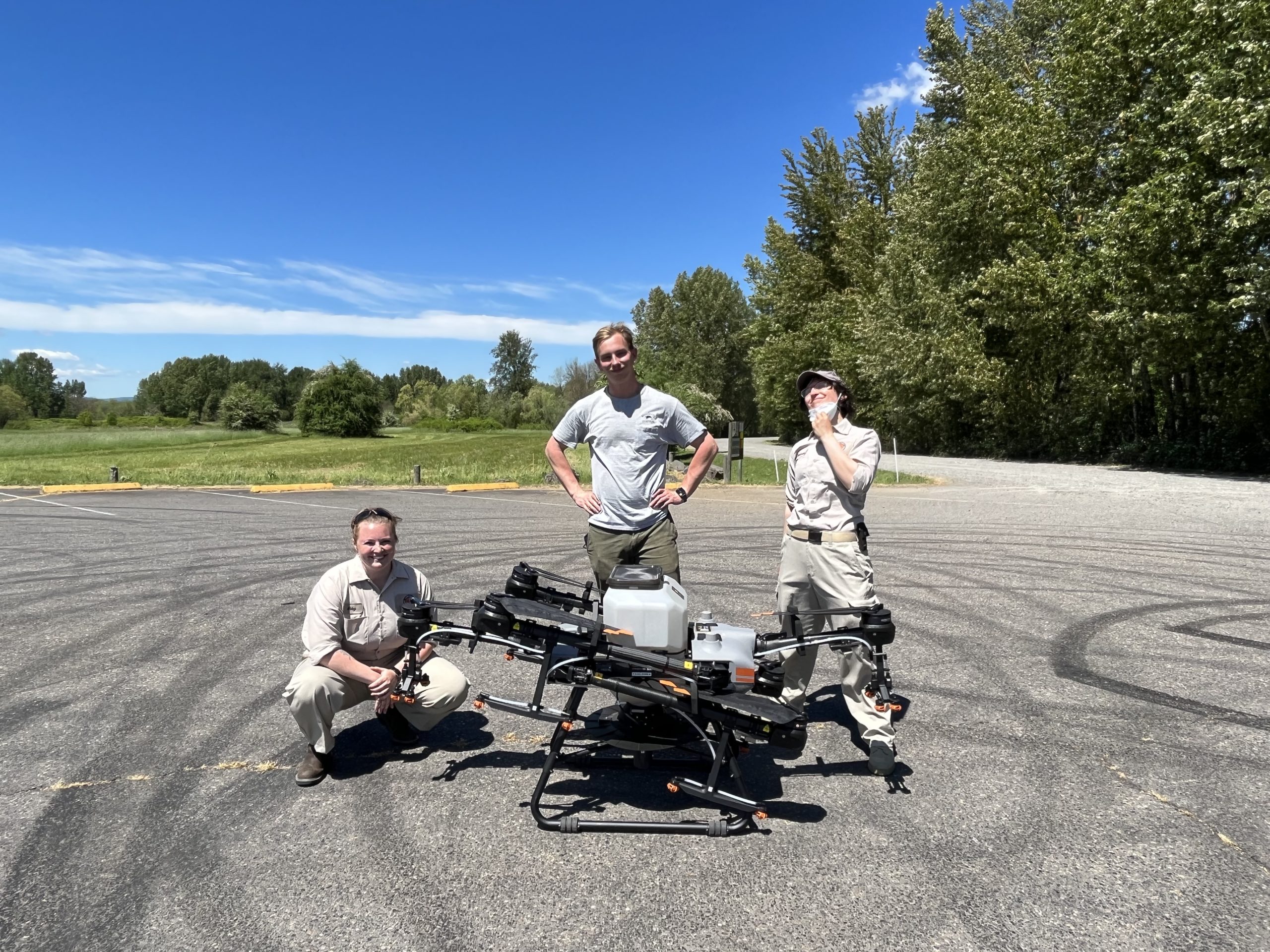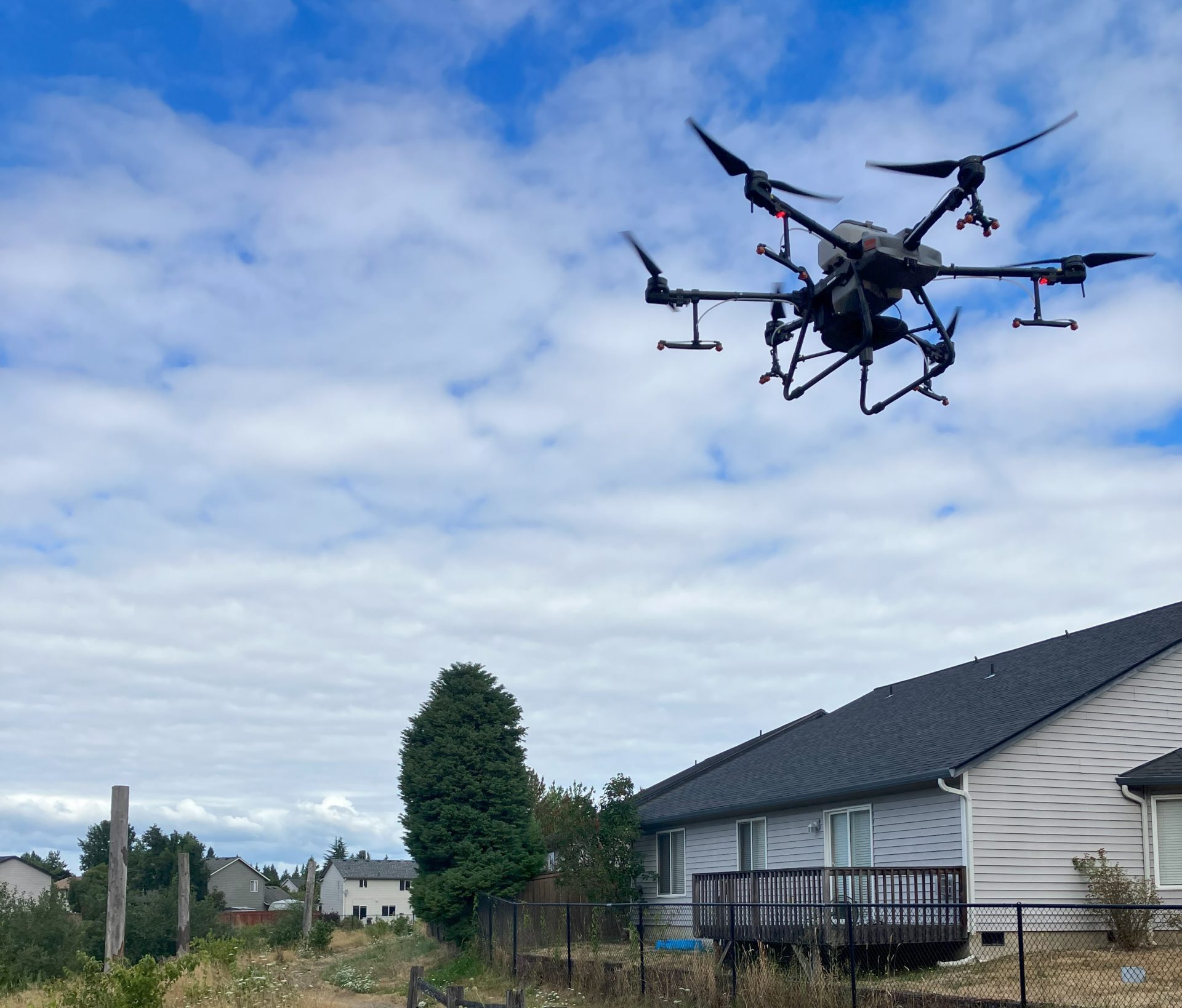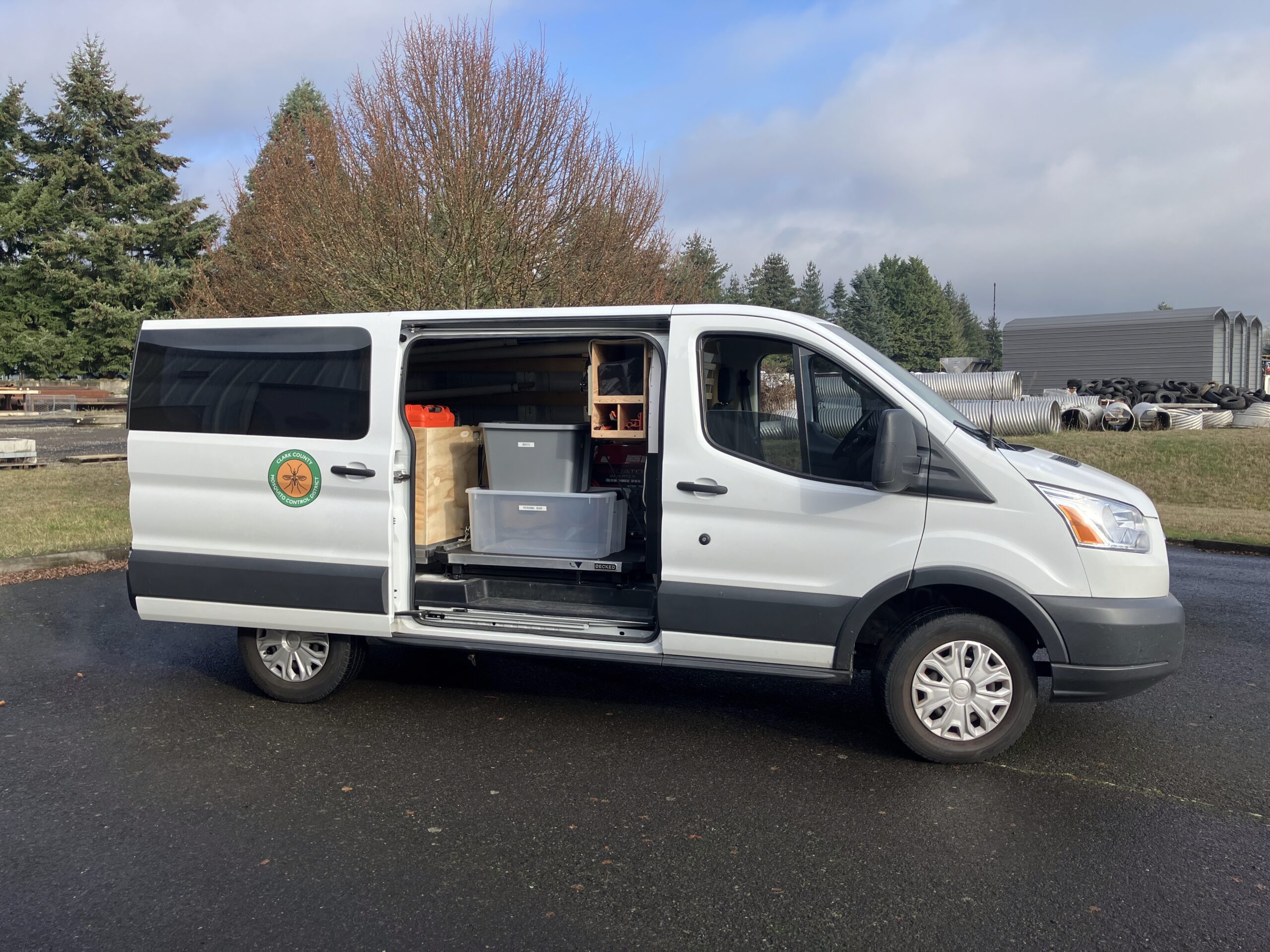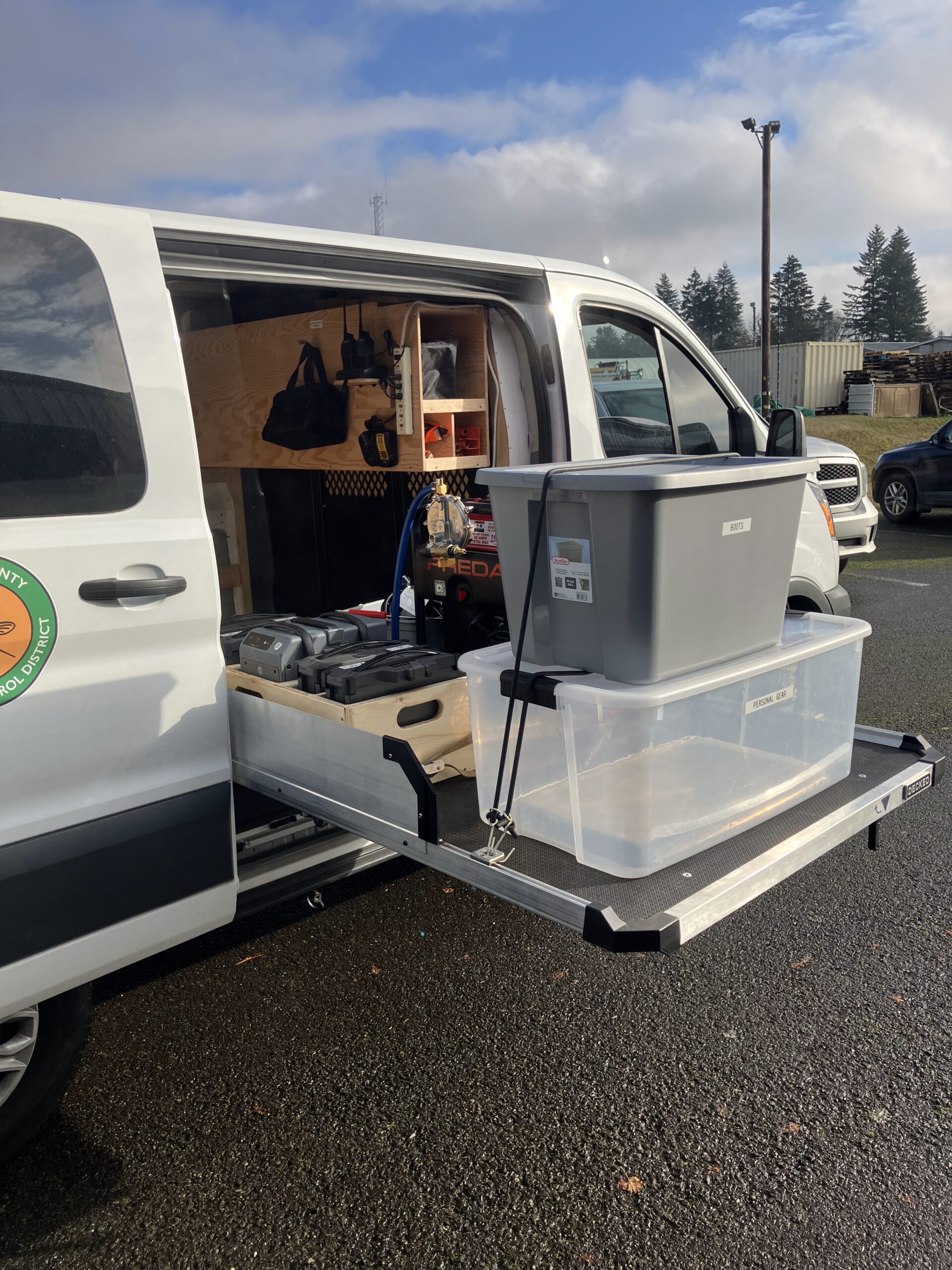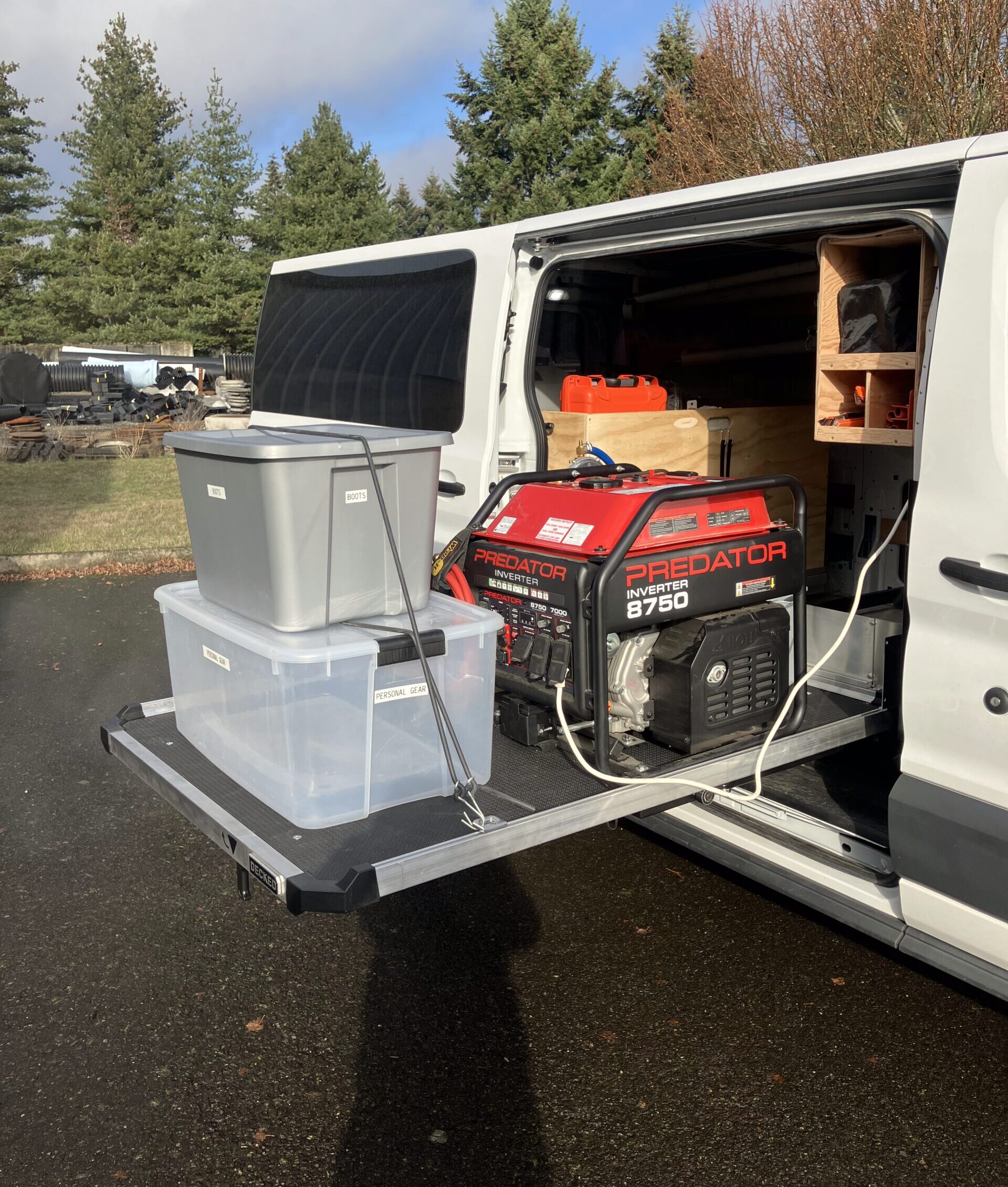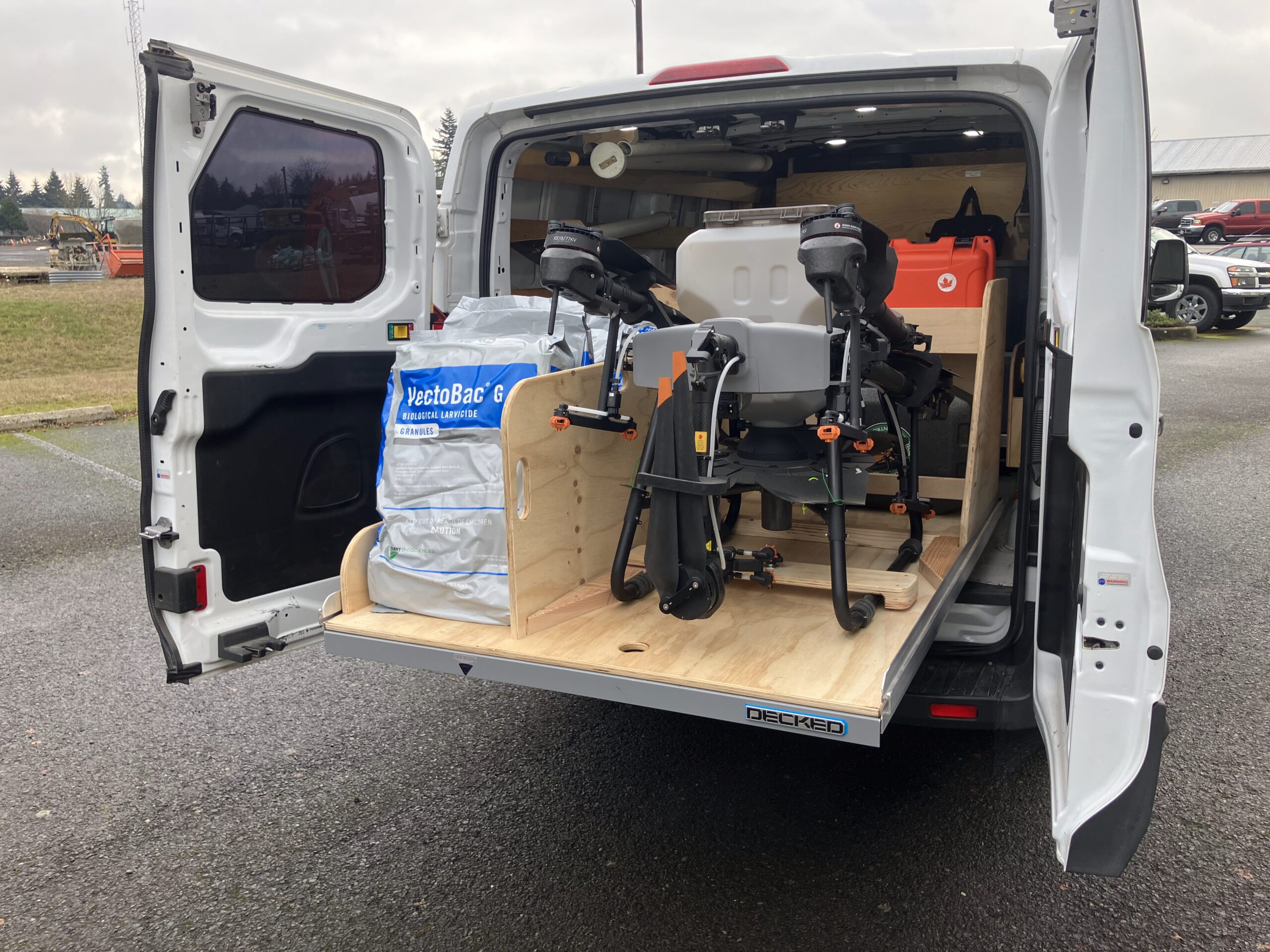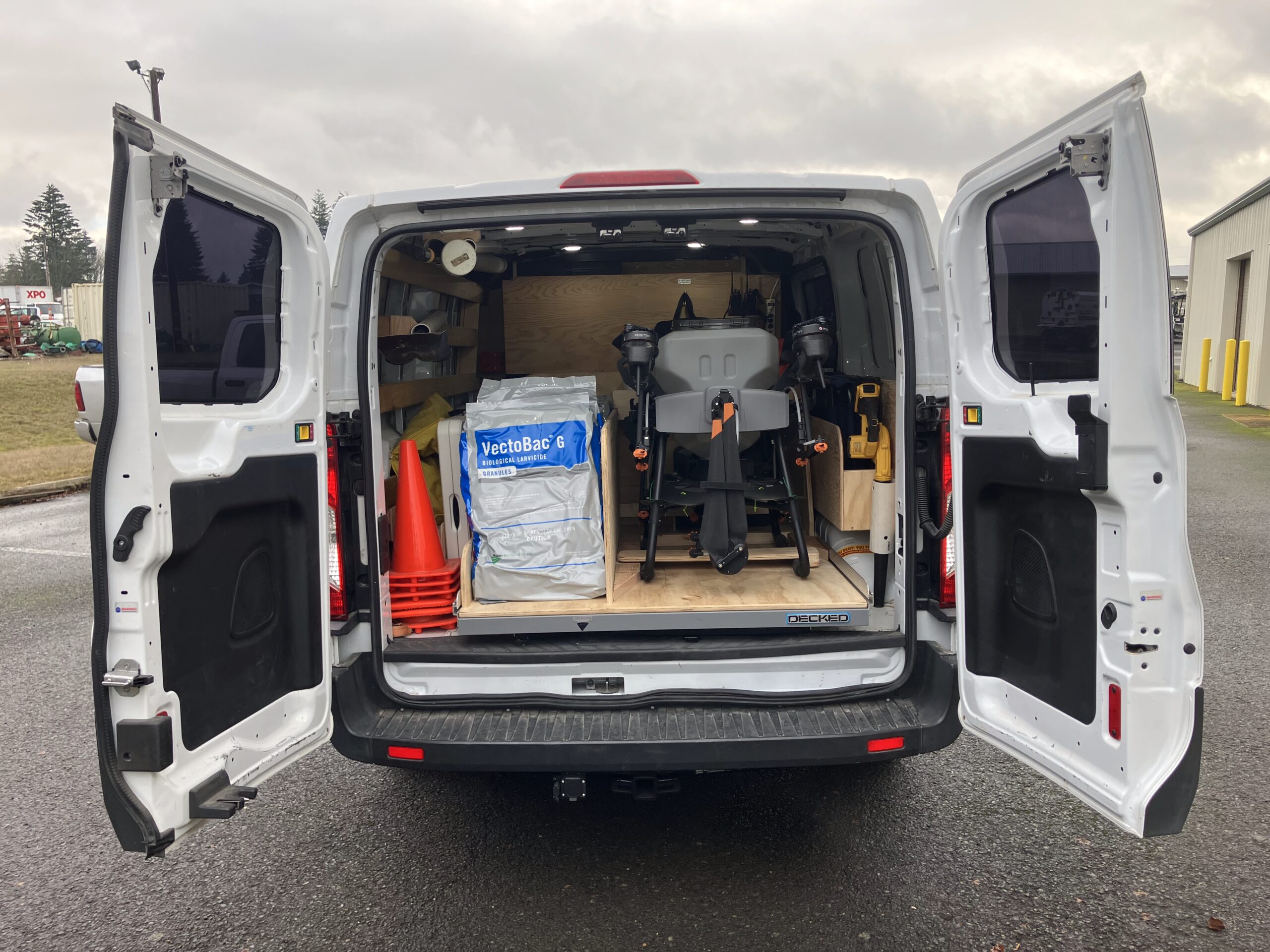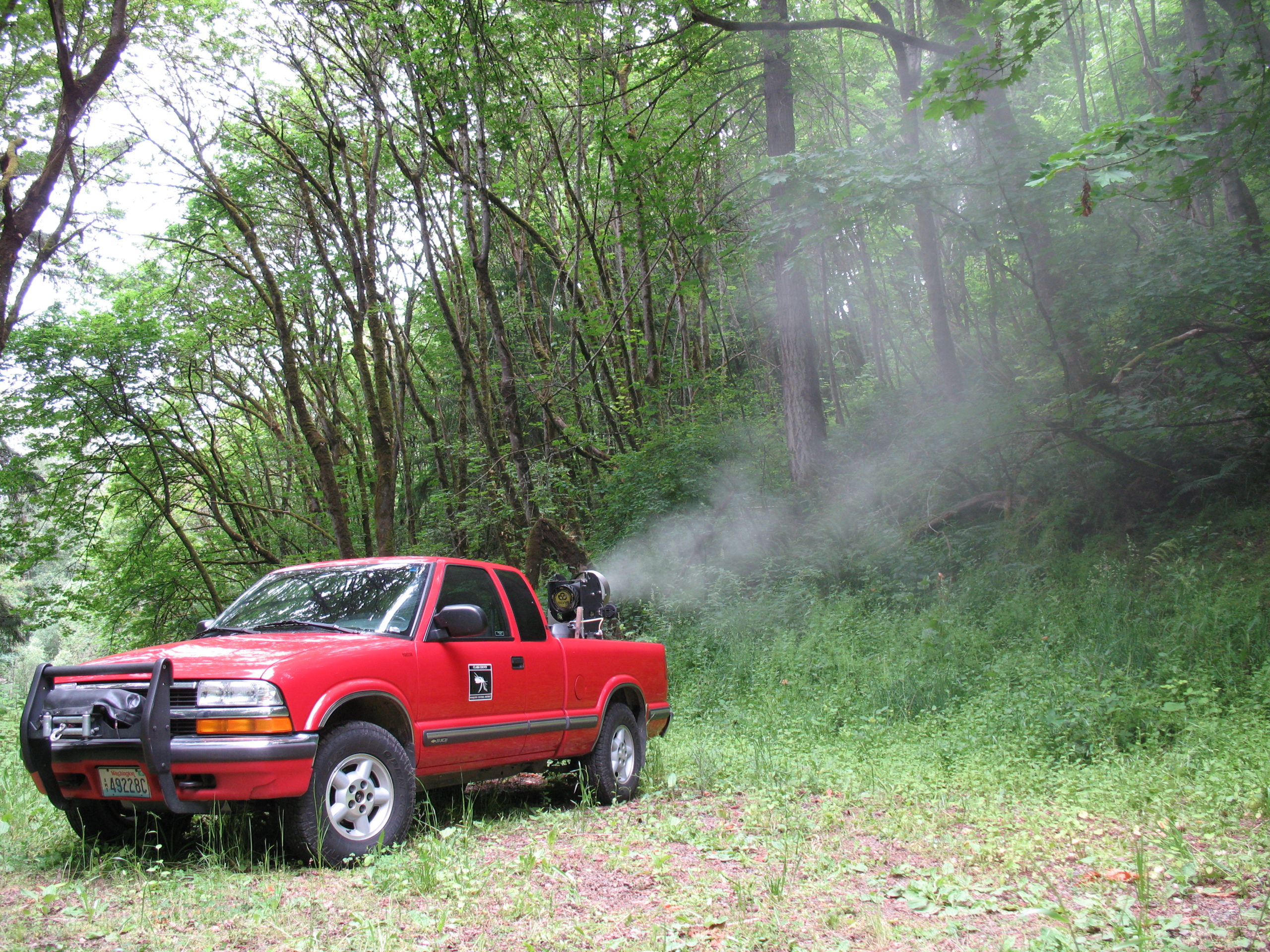Treatment Methods
The Clark County Mosquito Control District uses a range of different methods to control larval and adult mosquito populations. There is a range of different types of mosquito breeding sources throughout the county, from street drains to lakes, and may require different forms of application for an effective treatment.
To learn more about CCMCD’s treatment methods, please click on the different sections below.
“ARGO” refers to the brand name of a Canadian manufacturer that specializes in producing all-terrain vehicles (ATVs), most notably their amphibious ATVs.
At CCMCD, we utilize 8-wheeled, rubber-tracked, amphibious ATVs that can traverse through a wide array of different environments and conditions. These rugged vehicles provide an efficient and versatile option for larvicide or adulticide treatments in natural areas with terrain that is too treacherous for even a quad ATV.
Mosquito monitoring and control operations involving an ARGO ATV require a minimum of two vector control technicians: one to operate the ARGO ATV itself and another to disperse oil or granular larvicide, or ULV adulticide from the rear of the vehicle. At least one, if not both, of the vector control technicians in the ARGO ATV are licensed pesticide applicators.
For oil and granular larvicides, the technician responsible for applying product (i.e., applicator) does so using a modified, motorized backpack blower or granule spreader that has been securely mounted to the frame of the ARGO ATV. By oscillating the blower arm in a widespan motion and adjusting the rate of product output based on the vehicle’s speed, an applicator is able to effectively treat an area for mosquito larvae that may have otherwise been too cumbersome, or dangerous, to treat by other means.
Similarly, a technician can dispense ULV adulticide from the rear of the ARGO ATV via a handheld ULV fogger. This allows treatment in areas harboring a large number of adult mosquitoes that may have otherwise been inaccessible.
Since recruitment of certain mosquito species occurs primarily in remote wetland areas, the amphibious ARGO ATV serves as a powerful tool for our mosquito control efforts.
In urban settings, treatment for mosquito larvae residing in storm drains is accomplished primarily by our fleet of modified GO-4’s. Though commonly associated with parking enforcement, the GO-4 is an exceptional tool for executing our monthly treatment of the 60,000+ storm drain catch basins across the county during mosquito season.
The trunk of the vehicle is altered to house a mozzie, which is a specialized electric hopper connected to an elongated dispenser that releases a predetermined amount of granular larvicide with the pull of a trigger. The compact size and 3-wheel design of the GO-4 allows for easy maneuverability and access to storm drains for expedited treatment in both residential and commercial areas.
Our GO-4 operations are typically conducted from June through September, depending on environmental conditions. So, if you see a GO-4 travelling through your neighborhood or in the parking lot of your favorite grocery store during that time, look for the CCMCD logo on the side of the vehicle and put your mind at ease that we are dispensing larvicide, not tickets!
A friendly reminder! Easy access to storm drains expedites our treatment process. If a storm drain is blocked by a vehicle or other obstruction, our technicians must exit their vehicle to treat the blocked storm drain by hand with a larvicidal water-soluble pouch (WSP). Consider your local mosquito control employee and try not to park your vehicle on top of a storm drain whenever possible. We here at CCMCD thank you!
Quads are all-terrain vehicles (ATVs) operated by a single passenger that are equipped with four low-pressure wheels and nimble handling, which allow access to sites for treatment over more treacherous terrain.
When operating a quad, a vector control technician can deploy either granular larvicide or ULV adulticide from a backpack blower/fogger, or granular larvicide from the quad itself. A hopper-fed broadcasting spreader is mounted to the rear of the quad and dispenses granular larvicide at an adjustable rate.
Compared to applications conducted on foot, a quad allows for quicker access and treatment over a larger area. In addition to treatments, the quad is a versatile transportation tool to remote areas for larval surveillance and trail clearing, while maintaining minimal disturbance to the surrounding environment.
A motorized backpack blower is a great tool for treating areas with granular larvicide that are small and traversable enough that a motorized vehicle is not needed, but large enough that a handheld blower would be inefficient (e.g., shores of ponds or shallow, heavily wooded wetlands).
The backpack blower consists of a gas-powered hopper connected to a flexible pipe that dispenses granular larvicide at an adjustable rate. The blower assembly is affixed to a frame with two straps, allowing the entire system to be worn as a backpack. While wearing the backpack blower, a vector control technician can adjust the speed of the motor and the rate of product output, allowing for product dispersal to be tailored based on each site’s specific conditions and according to the product label.
Requiring only a single technician to operate, the backpack blower can accomplish treatments of large areas while on foot and is actively used throughout the mosquito season.
For small-scale treatment of areas containing standing water (e.g., a ditch or retention pond), a technician can apply granular larvicide using a modified battery-powered leaf blower. These handheld blowers have been lovingly nicknamed “The Bazooka” for their effective, yet stylish capabilities. Our customized handheld blowers are equipped with a hopper capable of holding up to 3 lbs of product that can be dispensed at an adjustable rate.
Compared to our backpack blowers, its compact size and low-level of noise production makes the handheld blower a great tool for applying larvicide in residential areas, or any area that can be treated effectively without requiring the power of a backpack blower.
Aerial larvicide treatments via Helicopter are a highly efficient, large scale approach to treating areas flooded by the Columbia River during the start of mosquito season in May/June. Additional helicopter treatments may be implemented in later months if multiple flooding events occur within a single season.
Riparian zones adjacent to the Columbia river, as well the numerous watershed systems feeding into the Columbia, can be affected during these inundation periods. When water levels increase, eggs laid by adult floodwater species during previous seasons can be submerged, and a large-scale hatch off event will typically follow.
Vast coverage of areas needing treatment within a brief period becomes critical to combat the larvae produced from the hatch off. The helicopter, fitted with a large hopper capable of holding nearly 500 lbs of granular larvicide per load, becomes an extremely powerful tool in accomplishing this feat. Helicopter larvicide treatments are used in conjunction with our other treatment methods during the flood season.
The newest addition to our treatment toolbox, the DJI Agras T30 Agricultural Drone, allows for aerial applications of granular larvicide in large rural and urban areas where treatment by helicopter is not possible.
A customized van is used to transport the Agras T30 with all the necessary equipment for conducting aerial treatments over a wide range of environments within a short amount of time.
In addition to our treatment drone, the CCMCD Drone Program was first established in 2022 with a DJI Air 2S Photography Drone. The Air 2S assists in drone treatment operations by scouting for new larvae-breeding sites or observing conditions of a planned treatment site to optimize treatment efforts.
The use of drones has already provided immense benefits to our mosquito control operations, and we plan on expanding the fleet as this innovative technology continues to develop.
When trap counts for adult mosquitoes meet our district’s action threshold of 20 adults/trap per night, adulticide treatments can be implemented to help control the adult mosquito population in that area.
Adulticides are dispersed using ultra-low volume (ULV) cold foggers that are either battery-operated handheld devices or gas-powered motorized systems mounted on a backpack or truck bed. These ULV foggers work by aerosolizing liquid adulticide into fine droplets that remain briefly suspended in the air, killing adult mosquitoes as they encounter these droplets.
For adulticide applications, we typically use two EPA-registered products: Duet™ and Merus® 3.0. Duet™ is a synthetic pyrethrin-based (derived from chrysanthemum flowers) formulation that is applied at extremely low rates (0.8-0.9 oz/acre) per label instructions. The Merus® 3.0 formulation is derived from natural pyrethrins and is also applied at extremely low rate (0.74 oz/acre). Though effective at killing target species that come into direct contact with the product, pyrethrin-based formulations have little residual time.
The ability to fog and overall success of a fogging operation is highly dependent on the environmental conditions (e.g., wind speeds, temperature inversions, ambient temperature, precipitation) at a given site. Scheduled fogging operations may be cancelled/postponed if conditions are not favorable. Please refer to our “Treatment Schedule” page for information on cancellations, or for further details on our planned/historical adulticidal fogging treatments.
Note: Due to the nature of the product and the extensive area across Clark County that may require adulticide treatments during mosquito season, we are unable to fog private residences individually. If you are experiencing mosquito nuisance at your residence, please submit a service request and we will focus adulticide efforts in your immediate area.
Additional Resources

CDC | Adulticide Fact Sheet

CDC | ULV Adulticide Treatment Fact Sheet

CDC | Larvicide Fact Sheet

CDC | Bti Fact Sheet
